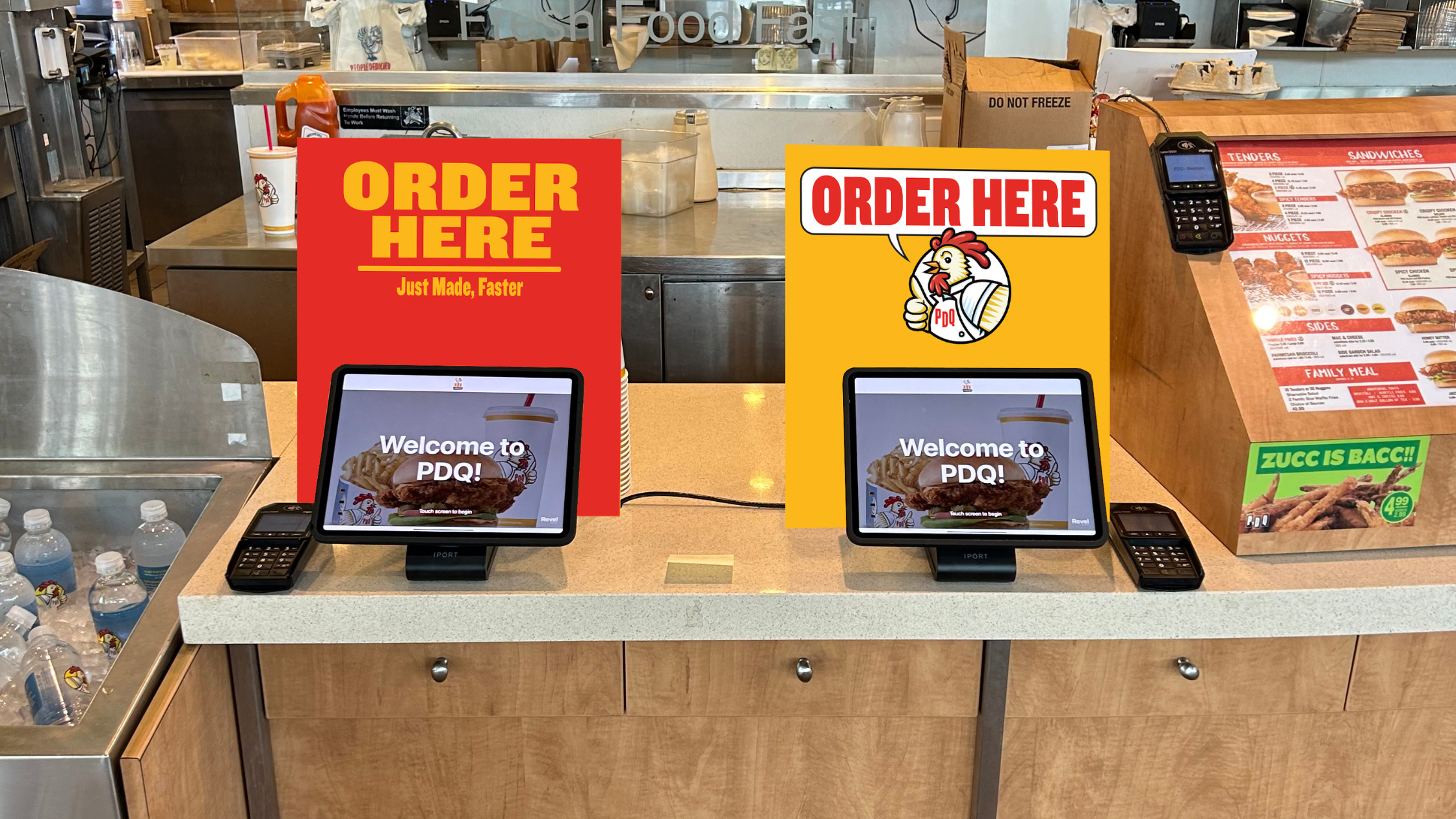Call Sales: +1 (833) 437-3835
Call Sales: +1 (833) 437-3835
Coral Drake | October 26, 2023 |

Kiosks are popping up everywhere in the quick-service restaurant industry, from international chains to food trucks. It begs the question, is this prime time for kiosks in quick-service restaurants?
In this blog post, we’ll dig deeper into the role of digital ordering in restaurants to help you decide whether kiosk integration is right for your restaurant.
The capacity of kiosks to upsell more effectively than traditional ordering is clear. Balance Pan-Asian Grille saw orders go from about $10 with traditional ordering to around $13 after implementing kiosk ordering at their restaurants. This kind of increase in the average check as a result of kiosk upselling isn’t unusual. But how do they do it?
Kiosks provide tailored upselling suggestions. Based on what's already in the cart or previous orders, the system can intelligently recommend complementary items or upgrades.If a customer orders a burger, the kiosk might suggest a combo meal or a premium side.
Digital ordering kiosks come with high-resolution screens that vividly showcase products, making them hard to resist.
Whether it's a mouth-watering image of a dessert or a limited-time offer highlighted prominently, these visual cues entice customers. They’re the nudge a customer needs to add just one more item to their order.
Timing matters too. A prompt showcasing a popular dessert just as the customer is about to finalize their main order can capitalize on impulse and increase the ticket just before it closes.
Unlike traditional counters where there's an inherent pressure to order quickly due to a waiting line, kiosks in quick service offer a relaxed, self-paced ordering experience. Customers can take their time to browse the menu, explore options, and make selections without feeling hurried.
This unhurried environment leads to more thoughtful choices, more browsing time, and consequently, a larger order.
Human interactions vary in upselling effectiveness based on factors like staff training or busyness, but kiosks provide consistent upselling prompts every single time.
Staff shortages are a pressing concern in the restaurant industry. Kiosk ordering systems enable businesses to maintain service standards and customer satisfaction, even amidst staffing challenges.
Kiosks significantly offset the need for front-end staff. Customers can seamlessly browse menus, place orders, make payments, and even get answers to common questions, all through the kiosk interface.
This transformative shift allows businesses to reallocate their staffing, prioritizing areas like the kitchen or delivery.
The efficiency and autonomy offered by kiosk systems have unlocked new horizons for entrepreneurs in the quick-service restaurant industry. A single person can now reasonably run a food truck or small restaurant themselves, leveraging self-service ordering options to keep lines flowing despite lean staffing.
Beyond their primary role in streamlining the ordering process, kiosks serve as invaluable data collection tools.
Kiosks can meticulously record every kiosk order placed, which means they can monitor customer behavior. For instance, if a patron opens a menu item but opts not to add it to their cart, this data is logged. If an item is consistently viewed but rarely chosen, it might hint that the product image or description needs a revamp.
Which dishes peak in popularity during specific times? How frequently do patrons tweak a standard order? Are there patterns in kiosk ordering habits influenced by weather or community events?
Dissecting this kiosk data empowers businesses to fine-tune their offerings, deals, and manpower.
Contemporary kiosks integrate flawlessly with inventory tracking systems. As orders roll in, the kiosk can transmit this data instantaneously to the kitchen and inventory oversight system.
This synchronization ensures the kitchen remains in the loop, alerting them to the need for restocks of in-demand items, and curtailing the odds of having to take something off the menu.
Kiosks in quick service restaurants are a helpful tool when it comes to serving customers well.
The self-service nature of kiosks offers customers a relaxed ordering environment. They can take their time, explore all options, and make confident choices.
Without the need for verbal exchanges and manual entries, kiosks swiftly process orders. Since multiple kiosks can work at once, customers don’t have to line up waiting for a turn to order.
Mistakes in kiosk ordering are far less frequent compared to traditional methods. With clear menu displays and intuitive interfaces, customers can ensure their orders, especially those with customizations, are accurate.
Harnessing the power of kiosk data enables restaurants to offer highly tailored suggestions to customers. For instance, if a customer frequently orders a vegetarian dish, the kiosk might recommend a new plant-based side dish or beverage.
Such kiosk upselling techniques, backed by data-driven insights, elevate the customer experience, making them feel valued and understood. It also means they’re more likely to be happy with their food.
Kiosk data collected allows for a level of personalization previously reserved for high-end dining. By analyzing order histories and preferences, kiosks can make tailored offers, reminiscent of the personalized attention regulars receive from staff in luxury restaurants.
While kiosks have become a staple in the quick-service restaurant industry, they, like any advanced technology, present their own set of challenges. Recognizing these potential downsides and proactively addressing them can ensure that businesses harness the full potential of kiosk integration.
Designed with the consumer experience at its core, Revel’s Kiosk XT streamlines the ordering process.
Revel's kiosk offers a visually appealing user interface with options for branded messaging and promotions. Custom background images, videos, product visuals, branded fonts, and colors ensure that customers are engaged and excited about the offerings.
Kiosk XT supports features like upsell combos, split modifiers, gift card payments, loyalty rewards, and more.
Consider adding a kiosk to your tech offerings for a system that can increase your restaurant’s bottom line, reduce strain on staff, and serve customers better.